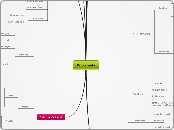Prokaryote
Bacteria
contain N-Acetylmuramic acid and D-aminopimelic acid
peptidoglycan
porous
Gram Negative
Outer Membrane
mostly DAP found
complex
Gram Positive
single thick homogenous layer
Subtopic
have muramic acid
have D-amino acid
succeptible to lysozyme and penicillin
membrane (ester-linked lipid)
Cell wall
Gram Negative
Outer membrane
Lipopolysaccharide (LPS)
O-polysaccharides
Antigen
Pathogenic
Lipid A
Endotoxin
Essential for viability
Lipoproteins
Porins
Phospholipids
Periplasmic space
high concentration of degrading enzyme
have transport proteins
Gram Positive
thick peptidoglycan
teichoic acid
prevent degradation
wall teichoic acid (link to peptidoglycan)
lipoteichoic acid (link to plasma membrane)
Atypical cell wall
Mycoplasma
smallest bacteria
no cell wall
membrane contain sterol
Chlamydiaceae
2 membrane like Gram Negative
non-replicative elementary body (EB)
Thin Peptidoglycan
Internal
Ribosome
protein synthesis
70S ribosome
consist of protein n rRNA
Endospore
Subtopic
Plasma Membrane
function
selectively permeable
synthesis cell wall component
assist in DNA replication
captures energy
carries on respiration
Movement
active
energy dependent
active transport
substance move from low to high concentration by transport protein
Group Translocation
only in prokaryote
molecules are chemically modified during transport
Passive
simple diffusion
molecule from high concentration to low concentration
Facilitated Diffusion
help of carrier protein
Osmosis
water from high to low concentration
Cytoplasm
80% water
no cytoskeleton
liquid-cytosol
contain enzyme carbohydrates, lipids, inorganic ions and low molecular weight compound.
Nuclear Area
single long circular molecule of double stranded DNA
no histone
no nuclear envelope
Plasmid
small circular
double stranded DNA
replicate independently
do not contain gene for growth
not connected to banteria chromosome
carries 10-100 gene
contain gene for survival ability
Inclusion
reserve deposited
can serve as a basis of identification
types
Metachromic granules
volutin
source of food
Polysaccharide granules
storage of energy
glycogen and starch
Lipid inclusions
storage material polymer poly-betahydroxybutyric acid
Sulfur granules
energy reserve by oxidising sulfur
Carboxysomes
carbon fixation during photosynthesis
Magnetosomes
Iron Oxide act like magnet
protect cell against hydrogen peroxide accumulation
mobility
Gas Vesicles
hallow cylinders covered by proteins
for buoyancy for aquatic prokaryotes
Endospores
Dormant form
Highly resistance to harsh condition
contain essential macromolecules and a variety of substances absent from vegetativecells
Spore structure
Exosporium
outermost layer
delicate covering made by protein
Spore coats
layers of spore-specific protein
Cortex
loosely cross-linked protein
Core or spore protoplast
contains core wall,cytoplasmic membrane,cytoplasm,nucleoid and etc.
Dipicolinic acid
only in endospores
locate in core wall
Calcium-diplicolinic acid
protect DNA
reduce water ability
Intercalate DNA
prevent heat denaturation
small acid soluble proteins
protect DNA from UV radiation, dessication and dry heat.
source of energy during germination
Shape
coccus
coccobacillus
vibrio
bacillus
Archae
s layer
pseudopeptidoglycan
Gram negative
surface with protein or glycoprotein subunit
pseudomurein
Gram positive
1 or 2 layer of thick protein
glycoprotein outside plasma membrane
single thick homogenous layer but different chemistry with Gram positive bactertia
Resistance to lysosyme and penicillin
No D-amino acid
No muramic acid
membrane
lipid monolayers
ether-linked lipid
External Cell Wall
Glycocalyx
Extracellular Polysaccharide (EPS)
firmly attach-capsule
loosely attach-Slime layer
function
protect from phygocytosis
attach to various surface
source of nutrient
protect cell against dehydration
Flagella
type
Coccus
Coccobacillus
Vibrio
Bacillus
Mobility
run or swim
thumble
swarm
Axial filament
Spirochete
bundle of fibril
spiral around the cell
at the end of cell beneath the outer sheath
fimbriae and pili
function
attachment
pillin
fimbrae
distributed over entire surface from a few to several 100
pili
longer than fimbrae
1 or 2 per cell for transfer DNA
conjugation
